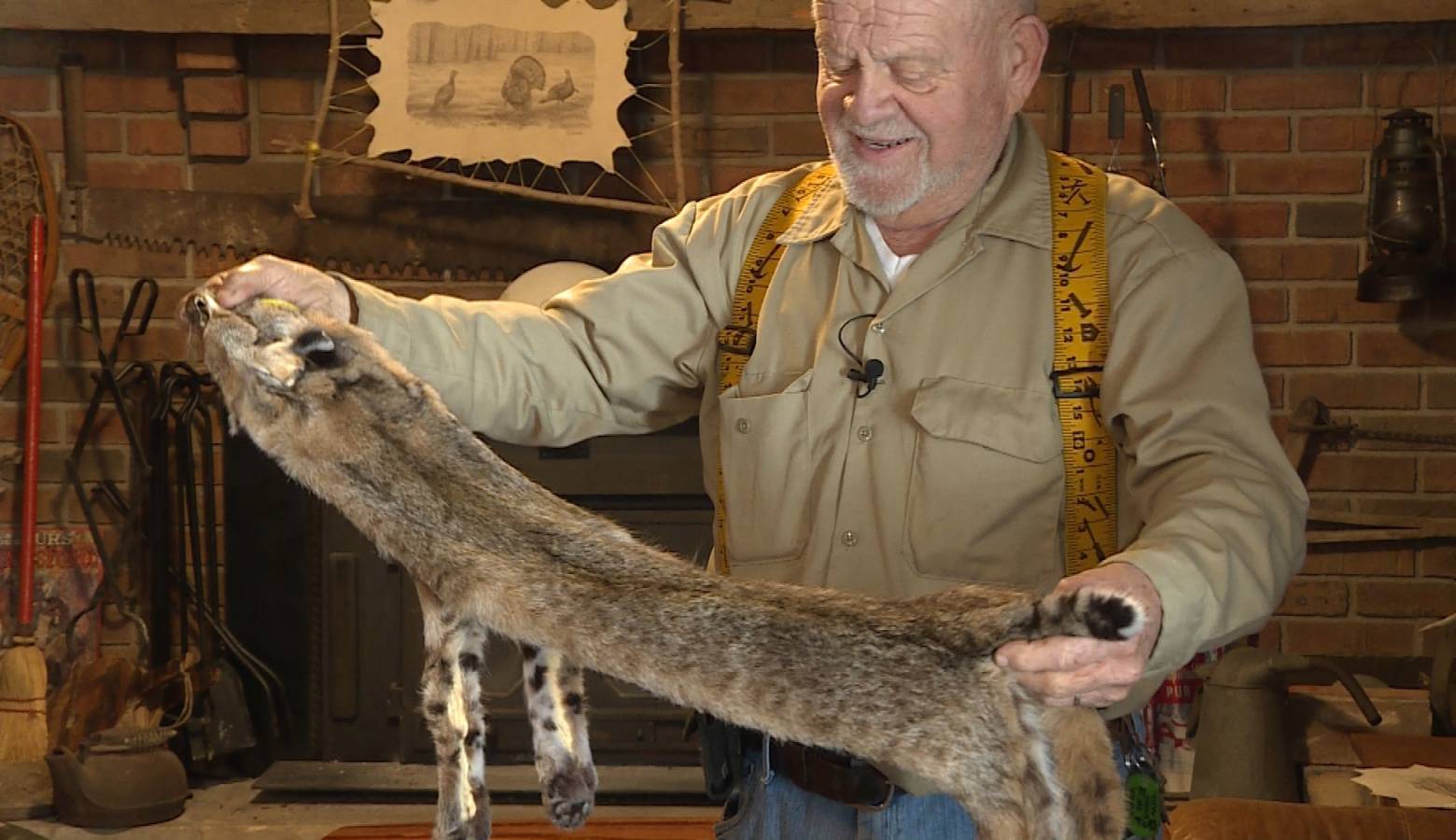Opponents Of DNR Bobcat Hunting Proposal Call For More Information

Indiana’s Department of Natural Resources is proposing several changes to fish and wildlife policies this year. And one that’s getting a lot of negative attention would allow hunting and trapping bobcats. As Indiana Public Broadcasting’s Lindsey Wright reports, some people are asking the state agency for much more information on how a bobcat hunting season would work.
James Mahoney loves to watch wild animals walk around his seven-acre property in southern Indiana. That’s why he put up trail cameras on some of the trees.
“Anything that walks in front of this camera, out to so many feet, 50 feet or so, it will take its picture and you’ll see it walk by,” Mahoney says.
Mahoney has a special compassion for animals. He owns several horses and chickens. He even rehabilitates animals, currently a fox named Baby.
That’s why it’s somewhat surprising for people to learn he’s been hunting and trapping animals his entire life.
“We could love these animals to death, but if there’s not a harvest then you’ve got an overabundance,” he says.
Mahoney says that’s why he thinks it could be time for the state to start allowing bobcat harvesting. He and his wife have taught hunter education for more than 40 years and say it’s just part of conservation.
“We have pictures of [bobcats] on our trail cameras here where they come right around here,” he says. “Right now, they’re beautiful to see. I don’t know if I could kill one, but if we have to we have to.”
Officials removed bobcats from the state’s endangered species list in 2005, and the DNR says there’s evidence showing the population is robust enough to start a hunting season.
Numbers starting going up in the early 2000s, and bobcats now seem to be thriving, especially in the southern Indiana.
Geriann Albers, the furbearer biologist for the division of fish and wildlife, says they don’t conduct population counts because it’s costly, and the numbers are always changing. Still, the species has been spotted in more than half of the state’s counties since 1970.
“What we do instead is look at trends,” Albers says. “So the surveys we have, and for bobcats we have two main ones and a third one we use to supplement it, we look at how the population is changing and at what rate it’s changing.”
The DNR hosted two public meetings in March, one in Mitchell and one in Anderson. Several farmers and hunters spoke in favor of the proposal. They claim bobcats are wreaking havoc on properties and depleting the turkey and rabbit populations.
Charles Davis, a director with the Indiana State Trappers Association, says he’s seen enough bobcats to know the population is getting out of control.
“This year, I quit trapping coyotes because I couldn’t run the traps for the bobcats. I caught two bobcats and I only had 10 traps out,” Davis says.
Officials say, if put in place, the hunting season would be tightly regulated, with a strict quota.
But that’s not good enough for the dozens who spoke out against the proposal.
Sierra Club Director Bowden Quinn worries allowing hunting could wipe out the population. He says there needs to be specific data, and aside from that, he says there could be an economic incentive to let bobcats be for now.
“I’ve seen bobcats twice, not here in Indiana, but in California, and it’s a big thrill, and of course you only see it for a second because it’s taking off,” Quinn says. “But how cool would it be, if in Indiana, people had a chance to see bobcats when they went for a walk in the woods?”
Bobcat hunting isn’t the only proposal causing outrage. A policy under consideration would require licensed animal control worker to euthanize raccoons, opossums, and coyotes. Although the DNR says the policy wouldn’t have a significant impact and would only be used in rare situations when removal is necessary, some workers say they should have a choice in the matter.
Mike Meservy has owned Advanced Pest Control for 14 years. He says his catch and release policy for nuisance animals is why a lot of customers use his service. He only puts down animals that have disease or are badly injured, and he see no reason for the DNR to take such a hard line.
“It’s just heartbreaking. If you’ve ever had to put down a momma with babies clinging to her fur, and we’re going to have to put them in a box and gas them with, usually it’s carbon monoxide but there’s other ways, and some of them are quite gruesome,” Meservy says.
Although opponents of the two proposals say the DNR isn’t providing enough information, Mahoney says conservation experts exist for a reason, and the state should consider their expertise.
“They’re knowledgeable. That’s their profession. Not because they have a degree but because they’re in the field,” Mahoney says.
The Natural Resources Commission will most likely take up the proposals at a meeting in May. If the commission approves, it gives the DNR the ability to put the policies into effect.

